MVP
A good article here
How to build MVP
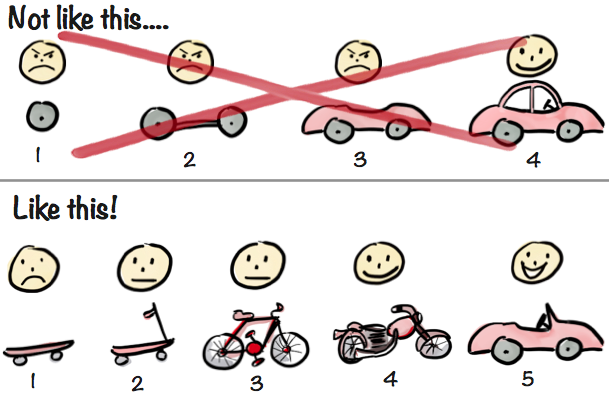
Benefits of MVP:
- launch faster
- test the hypothesis
- collect users’ feedback
- reduce development time and cost
- attract investors
- reduce financial risks
- check the product’s potential
- find and fix weak points
- save money
- create a product that the market needs and has a sizeable target audience
- attract early adopters
MVP Types
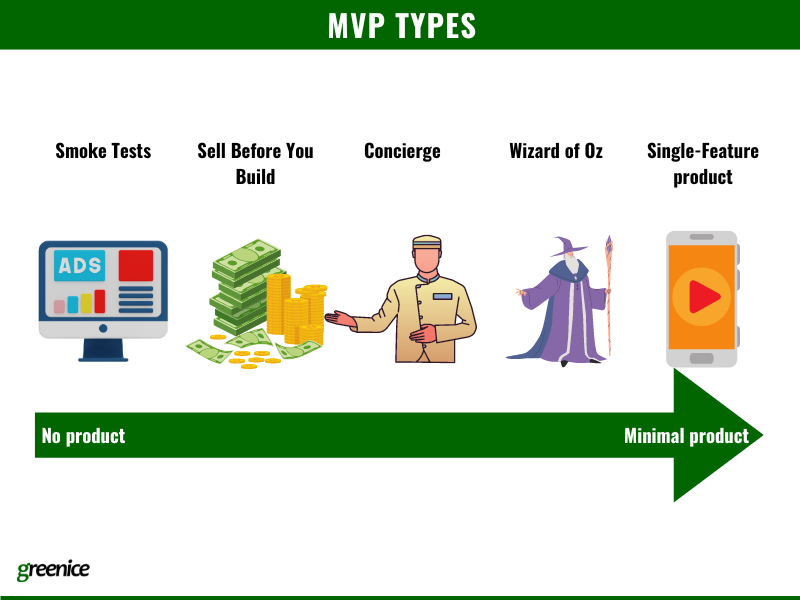 Smoke test - launching of a marketing campaign to test a hypothesis. It can be a landing page or an AdWords campaign. Here you can display how your product looks, and place a call-to-action button to see how many people are interested. You will pay only for a landing page and PPC campaign.
Smoke test - launching of a marketing campaign to test a hypothesis. It can be a landing page or an AdWords campaign. Here you can display how your product looks, and place a call-to-action button to see how many people are interested. You will pay only for a landing page and PPC campaign.
Sell before you build - pre-selling the product when it’s still a concept and building it with the money invested. You can use a platform like Kickstarter. The main challenge here is to create powerful marketing materials to attract potential customers who will spend money on your product.
Concierge - performing every function of the product individually and solving customers’ problems one-on-one. Users know services are done manually. The product owner works directly with each customer without automation. With this type, you can discover how the product should work and what features should be developed later.
Wizard of Oz - performing all functionality manually while the interface of the product looks automated. Unlike the concierge strategy, the users think that they use a ready app and the product owner keeps his work hidden.
Single-feature product - developing only the core functionality. The idea is to provide the bare minimum of features (it can be more than one) and operate smoothly so the users will enjoy the product.
“The reality is that, in some ways, the full thing is this really awesome idea in your head that you should keep in your head, but it should be very, very flexible, because it might turn out the full thing that you wanna build isn't what your customers want at all. So, I have this saying: ‘Hold the problem you're solving tightly, hold the customer tightly, hold the solution you're building loosely.” - Michael Seibel,
Your business model - Pitch:
What problem will your product solve? Who will buy your product? What solutions do your competitors offer? Creating a Business Model Canvas can help find answers. It consists of 9 blocks that are vital for any business:
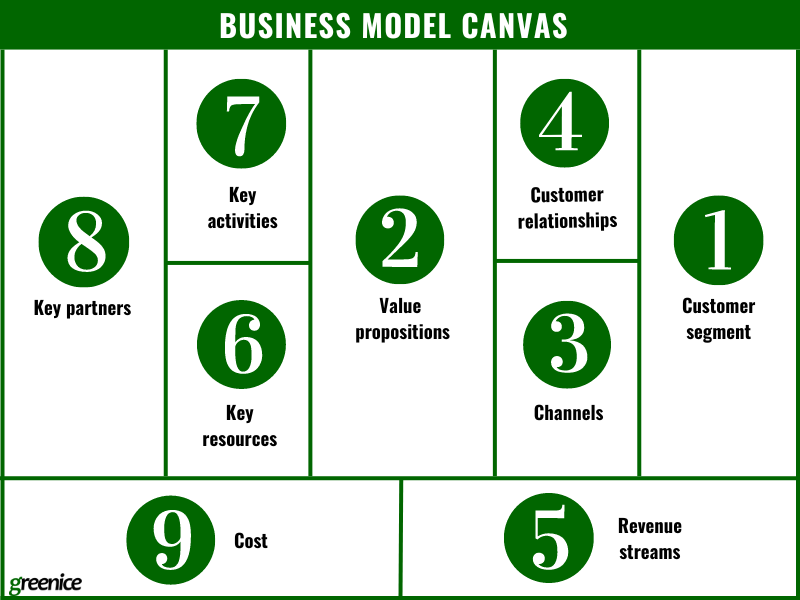
Customer segment - Who are the customers? Why would they buy your product? Value Proposition - Why would customers choose you over the competition? Think about elements such as customer pain points, jobs, your services and solutions? What is your Unique Value Proposition?
Channels - How you reach customers and how customers communicate with you and receive your product (e.g. physical and digital channels)
Customer relationship - How can you maintain and improve relationships with your customers (personally or with automation)
Revenue streams - How will you market your product? (freemium model, licensing, subscription, or direct sales)
Key resources - What do you need to deliver your value proposition? (intellectual property, physical assets, finances, human capital)
Key activities - What areas are essential to bring value to customers (e.g. marketing for customer acquisition, app development for technology-driven companies, design and manufacturing for physical products)
Key partners - Who can help you leverage your business model (e.g.joint ventures, non-equity strategic alliances)
Cost - How much it will cost to realize this business idea and run this business model (e.g. fixed or variable costs).
You answer every question with approximations because you don’t know the exact answers yet. Afterwards, you will have a general picture of how your business idea works.
Prioritise features.
- Story Mapping
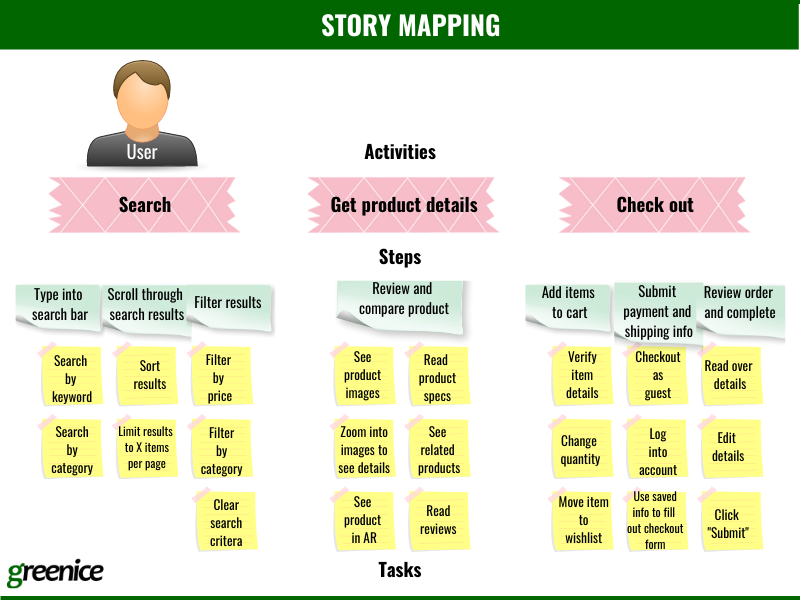
- Opportunity Scoring

- Value vs Complexity quadrant
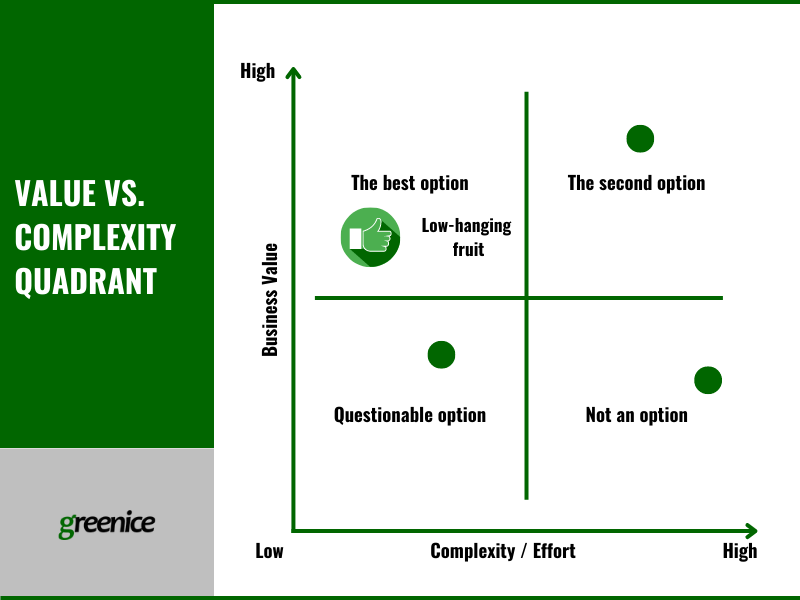 Eisenhower Matrix
Eisenhower Matrix

MVP Tips
- Keep deadline for every feature/project
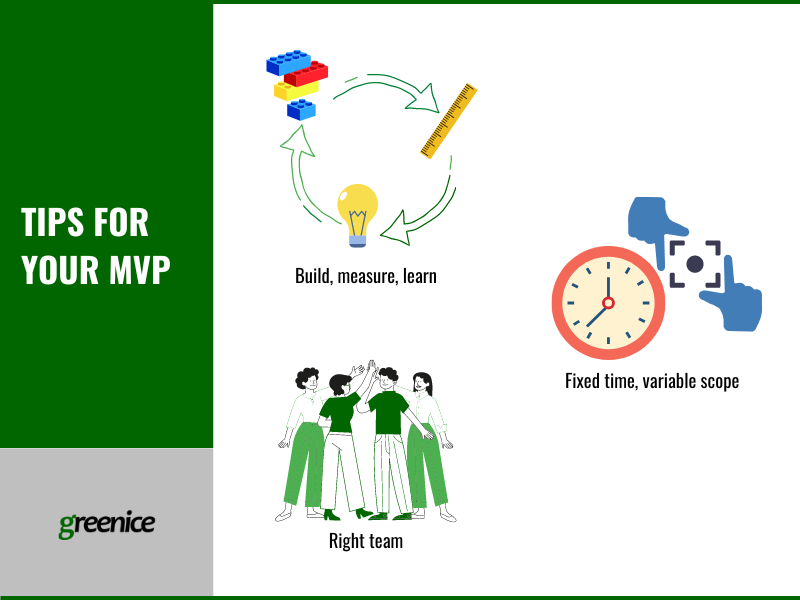
- Keep deadline for every feature/project
Learn from feedback
Pivot or persevere
Mistakes to avoid
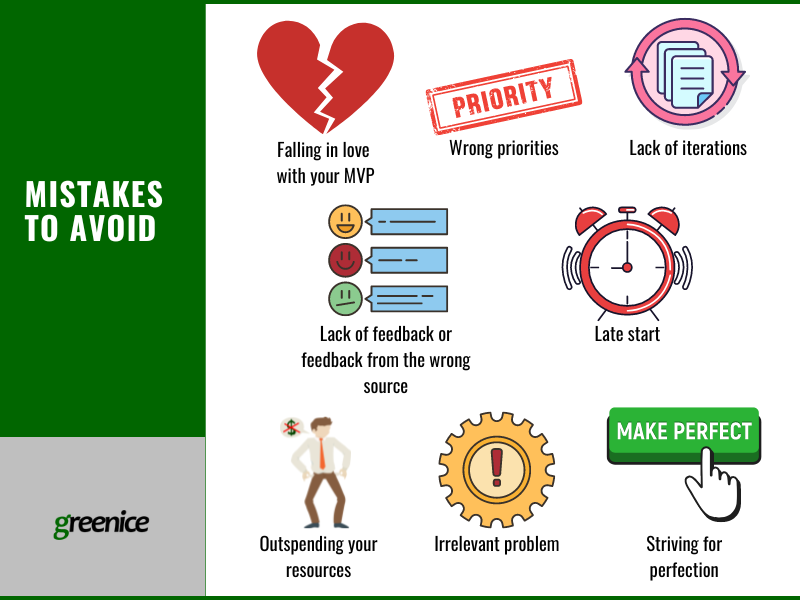
Keep Lean MVP
- Build in weeks(not months) - Software or start with Landing page, spreadsheet
- Extremely limited functionality - Condense down all the functionlity into small set of critical and essential features
- Appeal to small set of users - Keep vision of everyone, but ensure the set of initial users have what they need most
- MVP is just a base to iterate from - Remember, it’s not a full product.
Check out AirBnb MVP:
- No payment
- No Map

Twitch MVP:
- Just one channel
- Very low resolution video
- No video game

Stripe MVP:
- No bank deals
- Almost No features
- Stripe founders will come to your office and integrate it for you
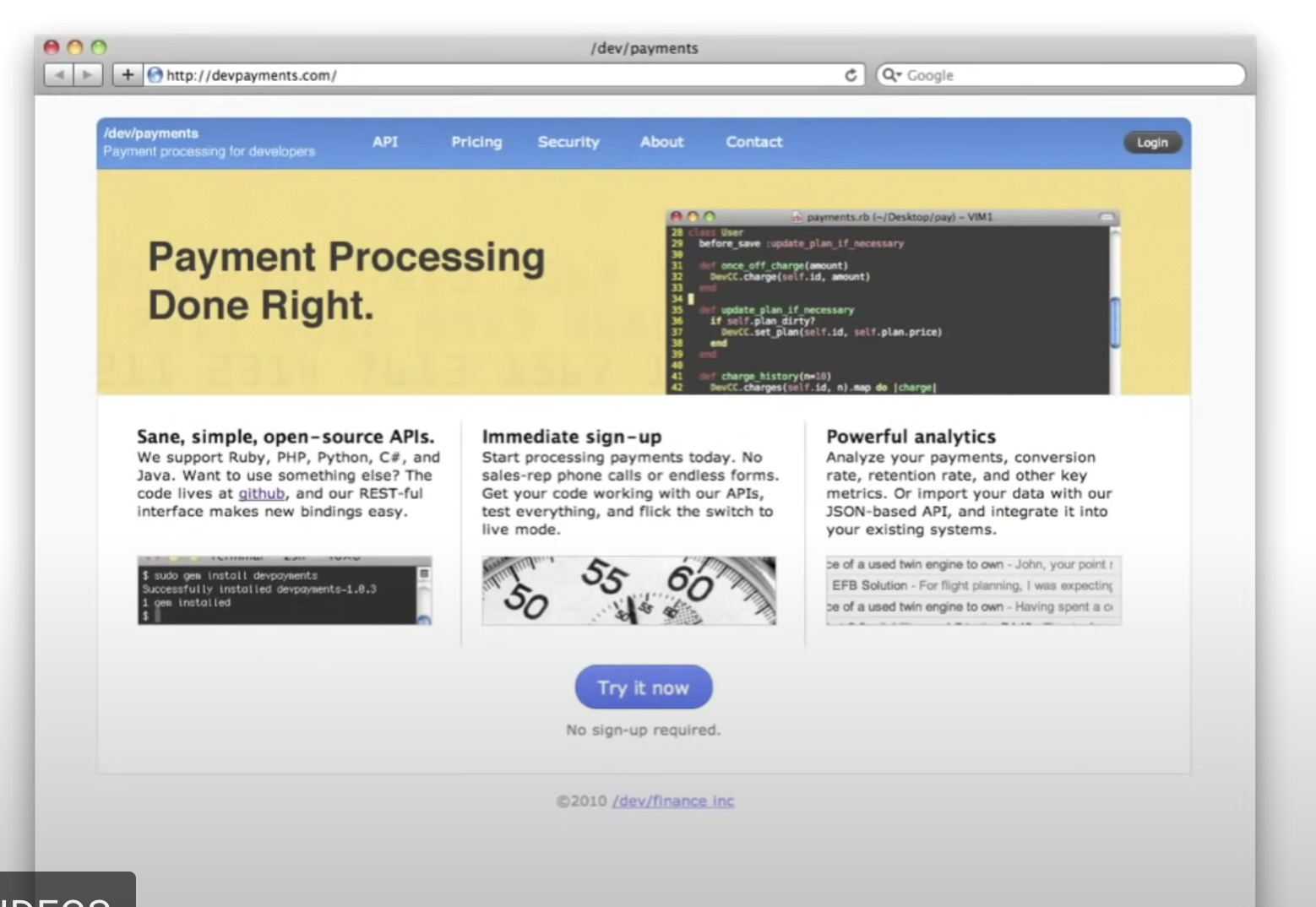
Heavy MVP
Few such categories
- Insurance
- Banking
- Rocket launch lab
Launching MVP
- Startup Launch isn’t special to users - In real, getting a customer is a real launch
- Learning from customers is easier with a MVP than without MVP.
Hacks for building your MVP quickly
- Timebox your specs - Go in reverse, i.e. what if I want to launch in 3 weeks? What all features I need to include?
- Write your specs - Each change of spec must be captured
- Cut your specs - cut the stuffs, which are not important
- Don’t fall in love with your MVP
This is a sapling 🌱 in my digital garden 🏡.